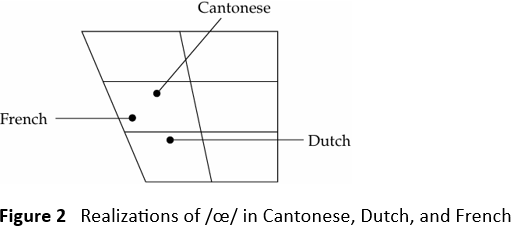

Grammar


Tenses


Present

Present Simple

Present Continuous

Present Perfect

Present Perfect Continuous


Past

Past Simple

Past Continuous

Past Perfect

Past Perfect Continuous


Future

Future Simple

Future Continuous

Future Perfect

Future Perfect Continuous


Parts Of Speech


Nouns

Countable and uncountable nouns

Verbal nouns

Singular and Plural nouns

Proper nouns

Nouns gender

Nouns definition

Concrete nouns

Abstract nouns

Common nouns

Collective nouns

Definition Of Nouns


Verbs

Stative and dynamic verbs

Finite and nonfinite verbs

To be verbs

Transitive and intransitive verbs

Auxiliary verbs

Modal verbs

Regular and irregular verbs

Action verbs


Adverbs

Relative adverbs

Interrogative adverbs

Adverbs of time

Adverbs of place

Adverbs of reason

Adverbs of quantity

Adverbs of manner

Adverbs of frequency

Adverbs of affirmation


Adjectives

Quantitative adjective

Proper adjective

Possessive adjective

Numeral adjective

Interrogative adjective

Distributive adjective

Descriptive adjective

Demonstrative adjective


Pronouns

Subject pronoun

Relative pronoun

Reflexive pronoun

Reciprocal pronoun

Possessive pronoun

Personal pronoun

Interrogative pronoun

Indefinite pronoun

Emphatic pronoun

Distributive pronoun

Demonstrative pronoun


Pre Position


Preposition by function

Time preposition

Reason preposition

Possession preposition

Place preposition

Phrases preposition

Origin preposition

Measure preposition

Direction preposition

Contrast preposition

Agent preposition


Preposition by construction

Simple preposition

Phrase preposition

Double preposition

Compound preposition


Conjunctions

Subordinating conjunction

Correlative conjunction

Coordinating conjunction

Conjunctive adverbs


Interjections

Express calling interjection


Grammar Rules

Passive and Active

Preference

Requests and offers

wishes

Be used to

Some and any

Could have done

Describing people

Giving advices

Possession

Comparative and superlative

Giving Reason

Making Suggestions

Apologizing

Forming questions

Since and for

Directions

Obligation

Adverbials

invitation

Articles

Imaginary condition

Zero conditional

First conditional

Second conditional

Third conditional

Reported speech


Linguistics

Phonetics

Phonology

Linguistics fields

Syntax

Morphology

Semantics

pragmatics

History

Writing

Grammar

Phonetics and Phonology

Semiotics


Reading Comprehension

Elementary

Intermediate

Advanced


Teaching Methods

Teaching Strategies

Assessment
Cardinal Vowels
المؤلف:
Mehmet Yavas̡
المصدر:
Applied English Phonology
الجزء والصفحة:
P19-C1
2025-02-25
734
Cardinal Vowels
Although we use similar traditional labels for vowel descriptions of different languages (e.g. high, front, rounded, etc.), we should not assume that vowels that are described the same way are identical in two languages. For example, both French and Galician have high front unrounded vowels, /i/, but their qualities are not the same. Similarly, identically transcribed vowels from different languages may not be the same. For example, if we look at /œ/ of Cantonese, French, and Dutch, we realize that they are all different; Cantonese has the highest tongue position, French is in the middle, and Dutch has the lowest. To avoid such problems in the description of vowels of different languages, phoneticians usually refer to the set of arbitrarily chosen vowels that is known as ‘cardinal vowels’ and describe the particular vowel of a language with reference to this system. The primary and secondary cardinal vowels are given in figure 1.

The front vowels (1–4) and (9–12) and the back vowels (5–8) and (13–16) are equidistant from one another. As such, they do not necessarily represent the vowels of any language; rather, they are arbitrary reference points that the vowels of any language can be described against. The top left corner of the vowel space defines the highest and most front possible vowel, (1). The bottom right corner (5) is the other extreme, which is the lowest and most back vowel.

The other two corners represent the extremes in low front (4) and high back (8). The secondary cardinal vowels (the ones inside the grid) repeat the primary set with the opposite lip rounding. As such, (9) is high front rounded, (12) low front rounded, (13) low back rounded, and (16) high back unrounded.
We will show how, using this system, we can describe vowels from different languages. Although, as stated above /œ/ is in the inventory of Cantonese, Dutch, and French, the realizations are not identical; this can be shown as in figure 2.
Thus, we can say that /œ/ of Cantonese is a little lower than (10) and a little centralized. As for the French and Dutch counterparts, we can state the following: while French /œ/ is a little higher than (11), the Dutch sound is a little lower than (11) and more centralized.
 الاكثر قراءة في Phonology
الاكثر قراءة في Phonology
 اخر الاخبار
اخر الاخبار
اخبار العتبة العباسية المقدسة

الآخبار الصحية















 "المهمة".. إصدار قصصي يوثّق القصص الفائزة في مسابقة فتوى الدفاع المقدسة للقصة القصيرة
"المهمة".. إصدار قصصي يوثّق القصص الفائزة في مسابقة فتوى الدفاع المقدسة للقصة القصيرة (نوافذ).. إصدار أدبي يوثق القصص الفائزة في مسابقة الإمام العسكري (عليه السلام)
(نوافذ).. إصدار أدبي يوثق القصص الفائزة في مسابقة الإمام العسكري (عليه السلام) قسم الشؤون الفكرية يصدر مجموعة قصصية بعنوان (قلوب بلا مأوى)
قسم الشؤون الفكرية يصدر مجموعة قصصية بعنوان (قلوب بلا مأوى)


















